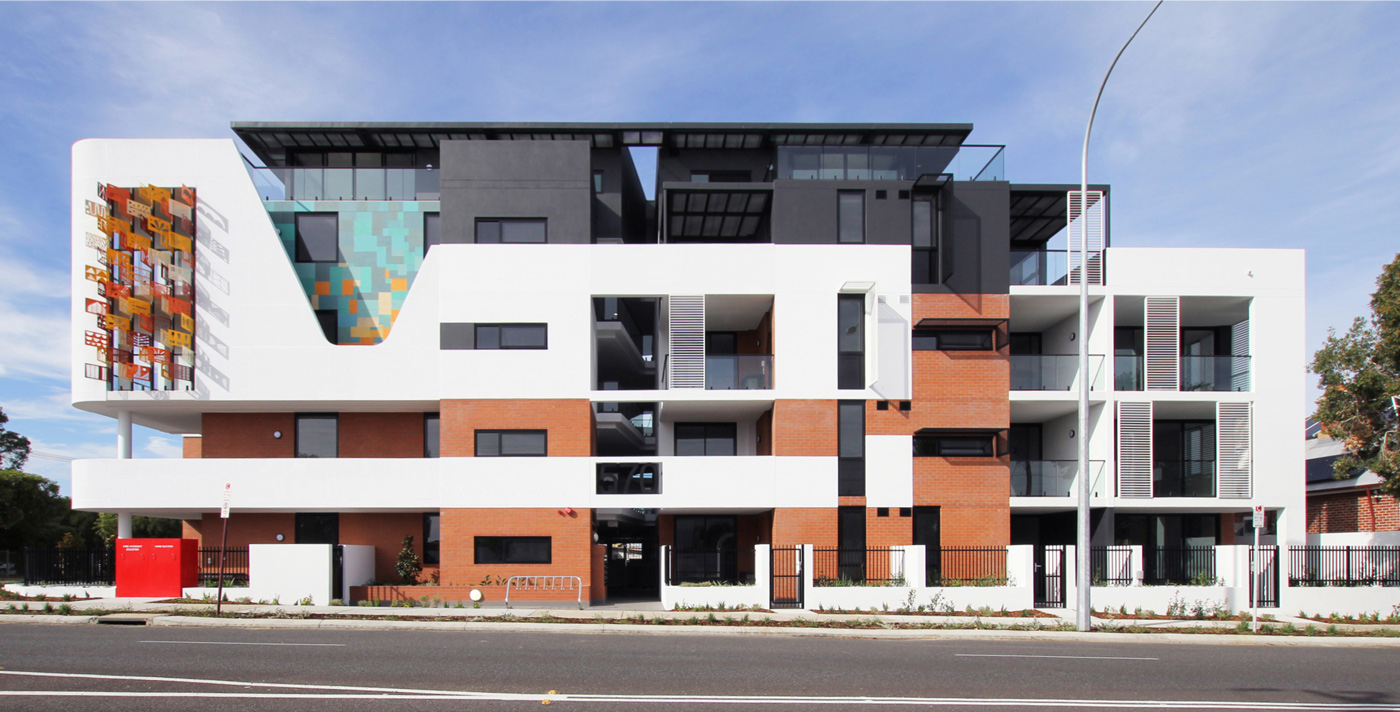Our need to increase urban density in Western Australia has sparked fierce community debate in recent years. Perth has one of the lowest urban densities of any city in the world bringing with it environmental, social and economic un-sustainability. The link between design quality and acceptance of density shouldn’t be underestimated, but is rarely acknowledged within this debate. The quality of medium and high density outcomes currently being generated is a major factor impeding our ability to achieve higher densities.
Most inner city local communities typically assume an anti-development stance. Their outlook emanates from a deep distrust of the planning system as well as a lack of understanding of it and a strong reaction to the high density outcomes currently being achieved. The link to design quality isn’t often consciously acknowledged though. Their viewpoint is further strengthened by our successive State Government’s reluctance to establish the supporting infrastructure, such as public transportation and quality public space that will allow higher densities to succeed.
In opposition to this property groups such as the Property Council of WA are pro-development but with little focus on achieving any particular level of quality. To sell apartments developers are typically highlighting proximity to social infrastructure such as cafe culture and lifestyle in the form of reduced maintenance requirements. These are certainly valid benefits of living in higher density housing which appeal to many. Numerous groups operating on social media such as Western Australian Apartment Advocacy, often established by people from a property marketing background, are also broadcasting this message.
As this fascinating battle escalates both sides are guilty of generating miscommunication to suit their own agendas. Living in an inner city area you can expect to receive anonymous letters in your post box from ‘concerned residents’ relating to contentious local developments. Pro-development advocates label these groups NIMBYs (Not in my Back Yard). The majority of these letters are littered with distortions of the truth and inaccuracies with no channel of response. The typical communication from developers should also be absorbed with a level of scepticism. Generated by marketing departments this advertising grossly over estimates levels of quality or reduces it to European appliances and stone bench-tops.
Strong local community groups have galvanised and primarily exerted their influence through local councils. Property groups and large developers who possess considerable funding have exerted their influence through lobbying State Government to shape development policy and process. To some extent local councils have been caught in the middle. Some accept the need to increase urban density but are also highly responsive to the views of concerned residents. Many adopted height and bulk bonuses within their planning policies in exchange for, and hoping to achieve, built form ‘design excellence’. This was an appropriate response however a number have now removed these bonuses finding they were typically surrendering concessions without actually receiving an increase in design quality. Developers have been particularly aggressive in exploiting these policies through the State Administrative Tribunal (SAT).
High density outcomes in Western Australia are particularly poor and medium density outcomes, recently referred to as the ‘missing middle’, are even worse. Much of the anger emanating from local communities as well as some councils has been directed firmly at abolishing DAPs. A significant proportion of this anger is a reaction to low quality outcomes but this response doesn’t address the core issue. Re-focusing this energy into establishing strategies and structures to improve the quality of built form outcomes would significantly reduce the adverse reaction to density occurring within local communities. This is a complex objective currently receiving very little to no focus.
The terms ‘high quality’ and ‘design excellence’ are being used by developers without any real associated assessment criteria. Many local council planning departments who are not necessarily trained to assess design quality now receive independent advice from Design Advisory Committees (DACs or DRPs) which is a positive step. Many local councils were also previously using their own assessment criteria which was often inadequate, or SEPP 65 which was produced in and for New South Wales. Design WA was recently created by the Western Australian Planning Commission (WAPC) and Office of the Government Architect. This is a comprehensive built environment design policy providing contextually specific assessment criteria. Unfortunately Design WA is now under significant pressure from large developer and property groups lobbying state government to protect their own commercial interests. These are the same people using the terms ‘high quality’ and ‘design excellence’ to justify height and bulk concessions with no interest in applying suitable assessment criteria to them.
Both sides of the battle are currently broadcasting agenda driven viewpoints. Developers are focusing on the positives density can bring to support their commercial activities. Development groups are spruiking development at all costs. The new homes lift-outs in newspapers are funded by land developers as well as the project homes and are therefore dominated by low quality single housing often located in fringe suburbs. Policy makers are focusing on the urgent need to increase density without acknowledging the role design quality can play in achieving it. As a form of resistance to all this local communities are highlighting the negatives low quality density can bring, for which many examples can easily be found. Resultantly there is a lack of understanding relating to this issue within the general public.
There are however some positive forces emerging. Future Bayswater are one group broadcasting a balanced educational message encouraging discussion and debate. As the name suggests this is largely focused on Bayswater but the message is also highly relevant to our wider built environment in Western Australia. The Planning Institute of Western Australia is also broadcasting a balanced message. These forms of community education, which acknowledge the importance of built form design quality, are an important element in achieving higher densities accepted by local communities.
Low quality density negatively impacts on existing inner city communities and streetscapes whilst high quality density could positively contribute to and activate these communities. Additional sources of balanced educational information easily accessible to local communities need to be generated. This is only the starting point though. A strategic, systematic and sustained approach will be required to encourage high quality built form outcomes which will also assist in generating wider acceptance of density in Western Australia. This strategy may include the following initiatives;
- Increase sources of local community education focusing on the need to increase urban density in conjunction with the importance of built form design quality
- Support Design WA to establish a context specific assessment criteria relating to built form design quality
- Lobby all levels of government (particularly state) to limit peripheral development and fund inner city infrastructure which will allow higher densities to succeed
- Explore public private sector partnerships to generate high quality outcomes in the market
- Encourage non speculative ‘community led’ housing procurement models such as Nightingale and Baugruppen
- Explore build to rent development models which may encourage investment in design quality resulting from longer periods of ownership
- Encourage all local councils to establish DACs or DRPs possessing individuals with ‘local knowledge’
- Lobby for increased transparency in all tiers of government involved in the planning, property and construction industry
- Develop meaningful community consultation processes to embed local community input into outcomes
- Mandate the use of architects on all multiple dwelling and large commercial projects
January 2018
Image - Fringe Apartments on William Street in Mount Lawley designed by MJA Studio






